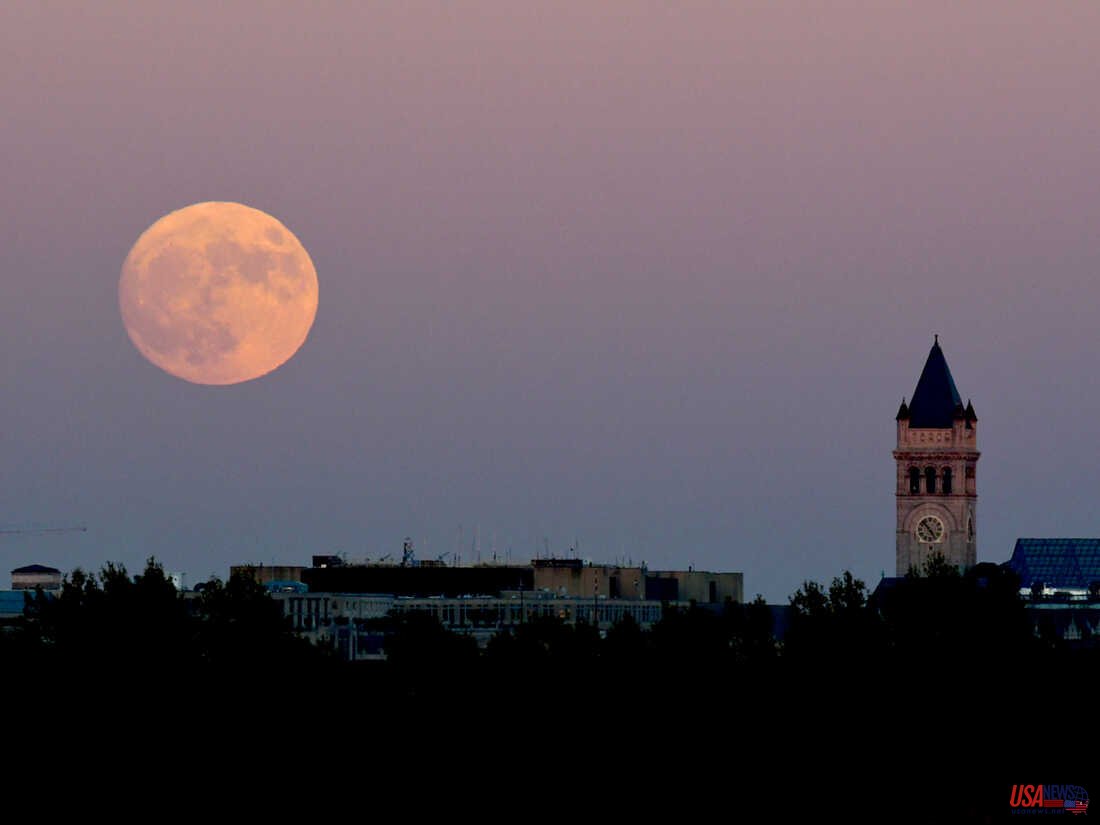Amateur astronomers, pay attention! The moon will be unusually bright and full on Tuesday night. You don't even need a fancy telescope or binoculars to see it.
The June full moon is also known as the Strawberry Moon. This name comes from the Algonquin Native American tribe of the northeastern U.S.A. and eastern Canada. It refers to the strawberry harvesting season in the region (not the actual moon's hue).
It is also at the closest distance to Earth this June, making it a supermoon according to most standards.
The Old Farmer's Almanac states that a supermoon can be defined as any full Moon at least 90 miles from perigee, which is the distance at which the Moon is closest the Earth. "June's full Moon is located at 222,238.4 mi (357,658 kilometers) aEUR" - comfortably within this cut-off point.
NASA claims that a supermoon is approximately 17% larger and 30% brighter then the faintest moons of the year when it orbits the Earth farthest. Supermoons occur only three to four times per year, and they never happen consecutively.
From Sunday evening to Wednesday morning, this one is fully loaded. Before you view, here's some information.
Officially, June's supermoon will occur aEUR", meaning that it will be fully illuminated at 7:51 AM by the sun. ET Tuesday, but it will still appear full the day before.
Why bother setting an alarm? Forbes says that you will get the best view of the moonrise and sunset close to the time when the moon is at its "full" phase.
It states that only on full Moon nights is it possible to see the Moon rise at dusk.
For example, in New York Tuesday sunsets are at 8:28 p.m. ET, and the moonrise is at 9 :16 p.m. ET. Los Angeles' times are 8:05 and 8:57 PM PT. Find your local moonrise or moonset times by clicking here.
After sunset, the moon will rise in east and shine throughout the night. It will then set in west at sunrise.
NASA says this week's full Moon is the lowest in the year. It will reach a height of 23.3 degrees above southern horizon.
You should be able see the sky as long as it is clear and there are no obstructions to your view.
Space.com says that full moons can be a great time to see lunar features because the sky is washed out by light. You can see the huge highlands and lowlands, which can be recognizable as certain shapes. Stories can be generated about these shapes depending on what culture you are following.
You can see the moon's surface through binoculars and a telescope if you have them. It adds that full moons are a good target for beginners because you can see it from the sky, and it is large enough to practice automated tracking.
The full moon will rise over Rome at 3:15 p.m. ET thanks to the free livestream provided by Ceccano's Virtual Telescope Project, Italy.
Don't be discouraged if you don’t have the best view this week, aEUR" because there are many supermoons further ahead.
Depending on your definition, Tuesday's Moon is the second of four supermoons consecutively visible in the Northern Hemisphere this summer. Others will follow on July 13th and August 11.













